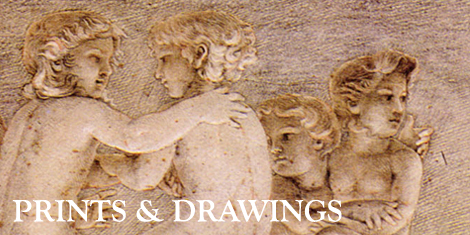
ON LONELINESS
Edvard Munch
The Lonely Ones. 1899 (1917)
Two people on the beach, a man and a woman, have turned their backs on the beholder. The physical distance between them corresponds to the void of the seemingly endless sea stretching out in front of them. The composition evokes the impression of human beings abandoned in nature and also their mutual alienation. The silhouette of the man is one with the black strip of coast, while the white dress of the woman stands out more clearly from the beach and the sea. Sky and sea are not distinguished by colour, the horizon being indicated merely by a fine horizontal line.
Munch discovered the technique of the woodcut in 1896. More than etching or lithography, this medium matched his ideas of artistic simplification of forms and the translation of human emotions into a graphic medium. The coloured woodcut The Lonely Ones goes back to the composition of a painting by Munch whose whereabouts are now unknown. The artist worked on the woodblock from 1899, and took up the work again in 1917. The coloured print was made after the finished wood block had been sawn along the outline of the figures and the shore. The two parts, which intermesh like the pieces of a jigsaw, were coloured differently, and then impressed together on to paper. In the process, Munch deliberately used the grain of the wood as a design feature.
Edvard Munch
Løten 1863–1944 Ekely/Oslo
Two People. The Lonely Ones.
1899 (1917). Coloured woodcut from a sawn block in black and grey-blue. 39.4 x 54.6 cm
Acquired 1962
WRM 1962/9



